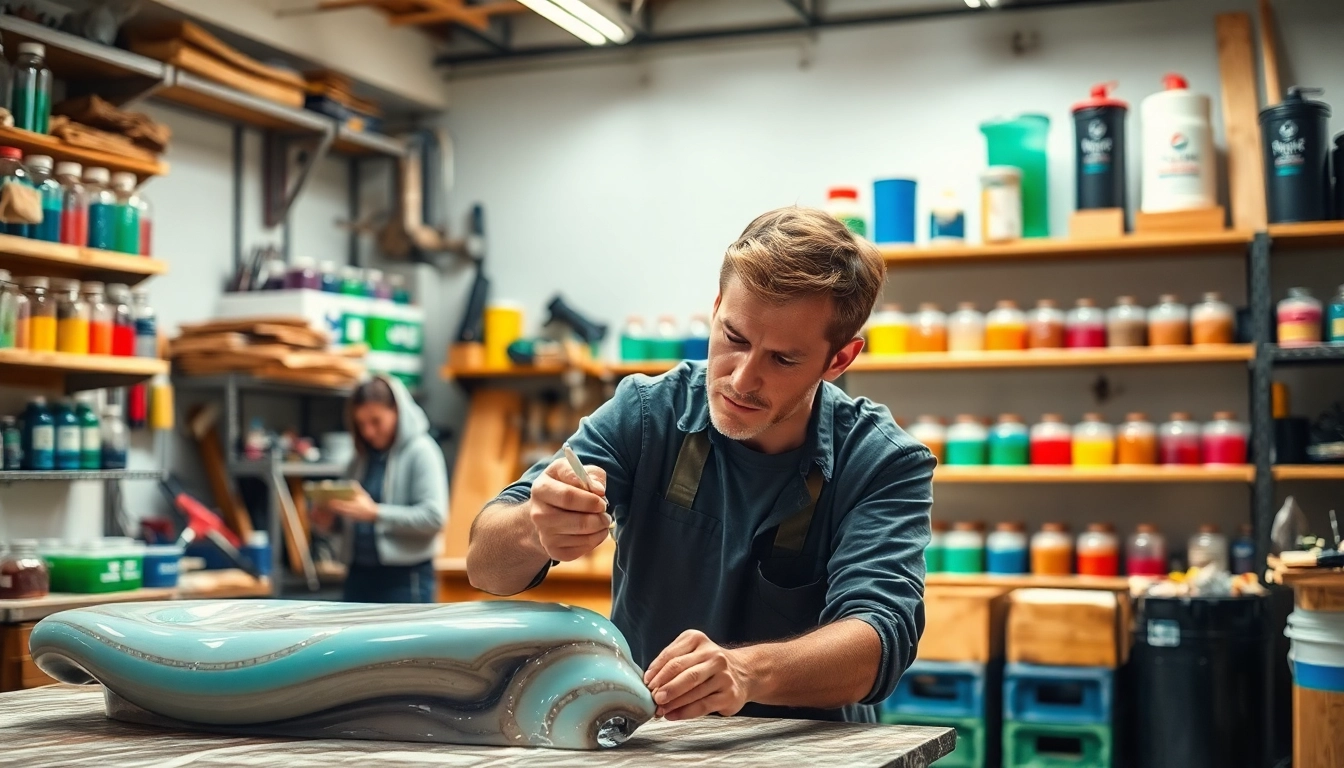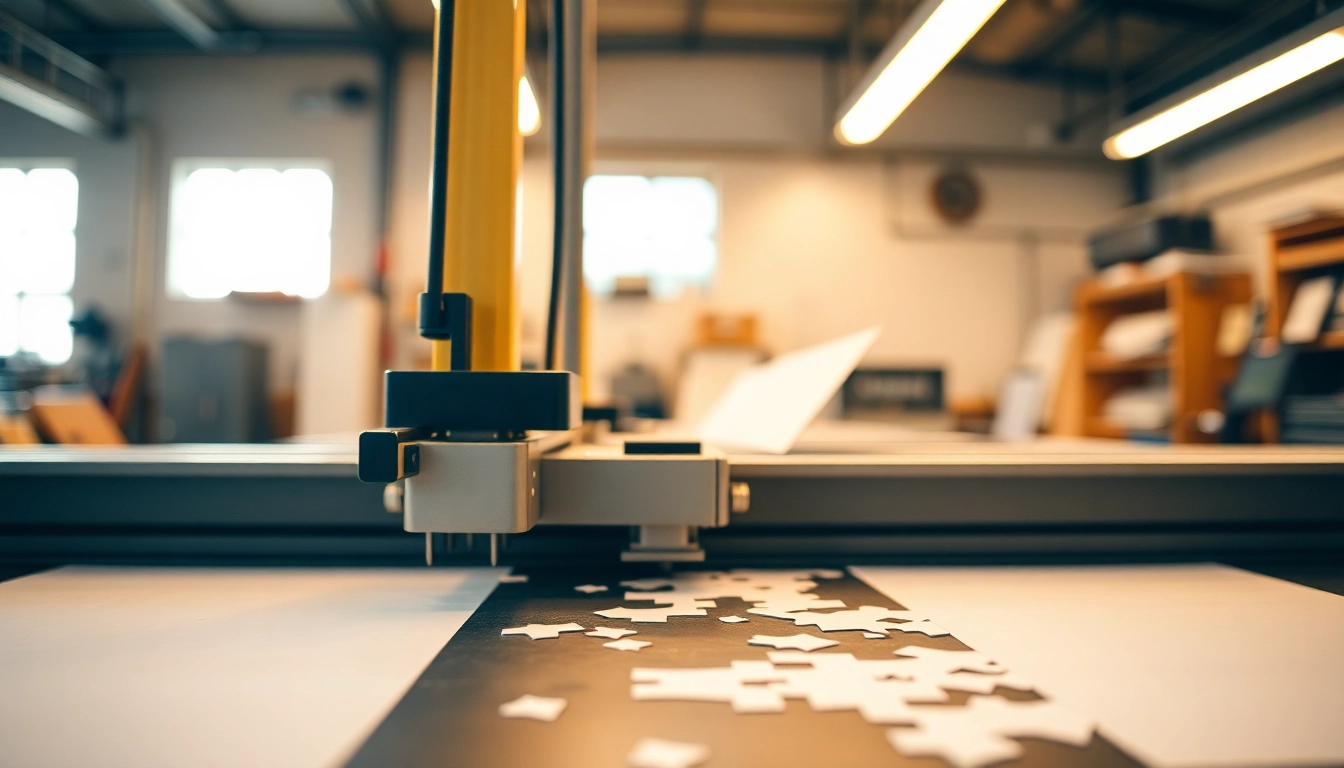Introduction to Laminating Resin
Laminating resin is a crucial material utilized across various industries, prized for its versatility and performance characteristics. Whether you are involved in boat building, automotive applications, or artistic projects, understanding laminating resin is vital to achieving quality results. This article aims to provide a comprehensive view of laminating resin, discussing its various types, applications, benefits, and best practices for usage. Additionally, we will explore innovative uses and future trends shaping this remarkable material. For further reading on this subject, see more about laminating resin.
What is Laminating Resin?
Laminating resin is a type of polymer resin specifically designed for the purpose of bonding multiple layers of material, typically fiberglass, to create strong, durable composites. Unlike ordinary resins that serve general purposes, laminating resin is formulated to provide enhanced adhesion, moisture resistance, and structural integrity. This material is generally cured using heat or chemical catalysts, allowing it to harden into a solid form that can withstand various stresses and environmental conditions.
Applications and Uses of Laminating Resin
The applications of laminating resin are vast and diverse. Key areas of use include:
- Boat Building: Laminating resin is an essential component in constructing durable and water-resistant boats. When used with fiberglass cloth, it forms a robust composite material that can withstand harsh marine environments.
- Aerospace Industry: In aeronautical applications, laminating resin contributes to the production of lightweight and strong components that improve fuel efficiency and performance.
- Automotive Manufacturing: In the automotive sector, laminating resin is used in the manufacturing of body panels and reinforcement parts due to its strength-to-weight ratio.
- Artistic Projects: Artists and crafters utilize laminating resin for DIY projects, embedding objects into clear resin for aesthetic purposes, and creating various artistic pieces.
Understanding Different Types of Laminating Resin
There are primarily two categories of laminating resin: polyester resin and epoxy resin, each with its unique properties:
- Polyester Resin: This type of laminating resin is commonly used in boat building and is known for its affordability and ease of application. However, it has a higher shrinkage rate during curing compared to epoxy.
- Epoxy Resin: Epoxy laminating resin offers superior adhesion and lower shrinkage rates. It is often selected for applications requiring enhanced strength and chemical resistance, making it suitable for high-performance environments.
Benefits of Using Laminating Resin
Advantages in Structural Applications
Laminating resins provide several advantages in structural applications. Their exceptional bonding strength ensures that layers of fiberglass or other materials adhere securely. This enhances the overall integrity of the structure, allowing for lightweight designs without compromising strength. Additionally, laminating resins are resistant to cracking and impact, making them ideal for high-stress environments such as automotive and aerospace sectors.
Curing Processes for Enhanced Durability
The curing process is critical to the performance of laminating resin. Depending on the type of resin used, curing may involve heat application or chemical catalysts. Proper curing ensures the resin achieves optimal hardness and durability. Thermal curing under consistent temperature and pressure conditions maximizes resin properties, leading to improved resistance to moisture and chemical exposure. This feature is particularly paramount in boat construction to ensure vessels can withstand prolonged exposure to water.
Environmental and Safety Considerations
While laminating resins offer significant benefits, safety and environmental considerations must be taken into account. Uncured resins can emit volatile organic compounds (VOCs), which can be harmful to health and the environment. Users should follow safety protocols, which may involve the use of personal protective equipment (PPE) and ensuring proper ventilation in workspaces. Additionally, many manufacturers are now focusing on developing low-VOC formulations and bio-based resins to mitigate environmental impact.
Best Practices for Laminating Resin Application
Preparation Steps for Optimal Application
To achieve the best outcomes with laminating resin, proper preparation is key. This includes:
- Surface Preparation: Ensure that surfaces to be bonded are clean, dry, and free from contaminants. Sanding surfaces can enhance mechanical adhesion.
- Measuring Ratios: Follow manufacturer instructions for mixing resin and hardener, as precise measurements are crucial for optimal curing and performance.
- Temperature Control: Conduct applications at temperatures within recommended ranges to prevent issues, such as premature curing or improper bonding.
Techniques for Even Application
Applying laminating resin evenly is essential for a successful outcome. Techniques include:
- Rollers: Use high-quality rollers to distribute resin evenly across fiberglass layers.
- Spraying: For large areas, a spray gun can provide a uniform application, but proper technique and equipment setup are vital to avoid overspray.
- Brush Application: Using a brush is effective for small or intricate areas but requires a steady hand to avoid drips or uneven coverage.
Common Mistakes to Avoid
Several common pitfalls accompany the use of laminating resin:
- Not following the mixing ratios: Inaccurate ratios can lead to poor curing or compromised strength.
- Skipping surface preparation: Proper surface prep is necessary for the resin to adhere effectively.
- Ignoring environmental conditions: Temperature and humidity levels can significantly affect curing time and quality.
Innovative Uses of Laminating Resin
Creative Projects Leveraging Laminating Resin
Creativity is another arena where laminating resin shines, with applications in various artistic projects. Craftspeople use laminating resin to create jewelry, tabletop coatings, and decorative art pieces. For instance, embedding natural elements like leaves or flowers within resin can yield visually stunning effects, leading to a growing trend in the DIY craft and art communities.
Role of Laminating Resin in Boat Building
The marine industry remains one of the most significant consumers of laminating resin. It’s utilized in both new vessel construction and repairs. The resin’s waterproof properties are imperative for maintaining integrity and safety in marine environments. Innovations like incorporating carbon fiber and advanced resin systems have led to lighter and more robust hull designs that enhance performance and fuel efficiency.
Artistic Applications and Materials
Beyond functional applications, laminating resin is increasingly being used for artistic expression. Artists experiment with color pigments, metallic powders, and various additives to create unique finishes. The versatility of laminating resin allows for endless creative possibilities, making it a favored medium among modern artists and crafters.
Future of Laminating Resin Technology
Emerging Trends in Laminating Resin Products
The laminating resin market is undergoing continuous evolution. Emerging trends include the development of high-performance, bio-based formulations that reduce environmental impact while maintaining high durability and strength. Additionally, advancements in formulation technology allow for more rapid curing times and enhanced performance in a variety of applications.
Sustainability Innovations in Resin Development
With growing ecological awareness, manufacturers are focusing on sustainable practices. Research into plant-based resins and low-VOC products is advancing the industry towards more eco-friendly options, providing alternatives that do not compromise performance while catering to environmentally conscious consumers.
Predictions for Market Growth and Influence
The global demand for laminating resin is expected to rise as industries such as automotive, marine, and construction continue to evolve. The trend toward lightweight materials and high-performance composites will drive this growth. As technology continues to advance and eco-friendly options gain traction, the market for laminating resin will likely see substantial transformation, shaping future applications across various sectors.



